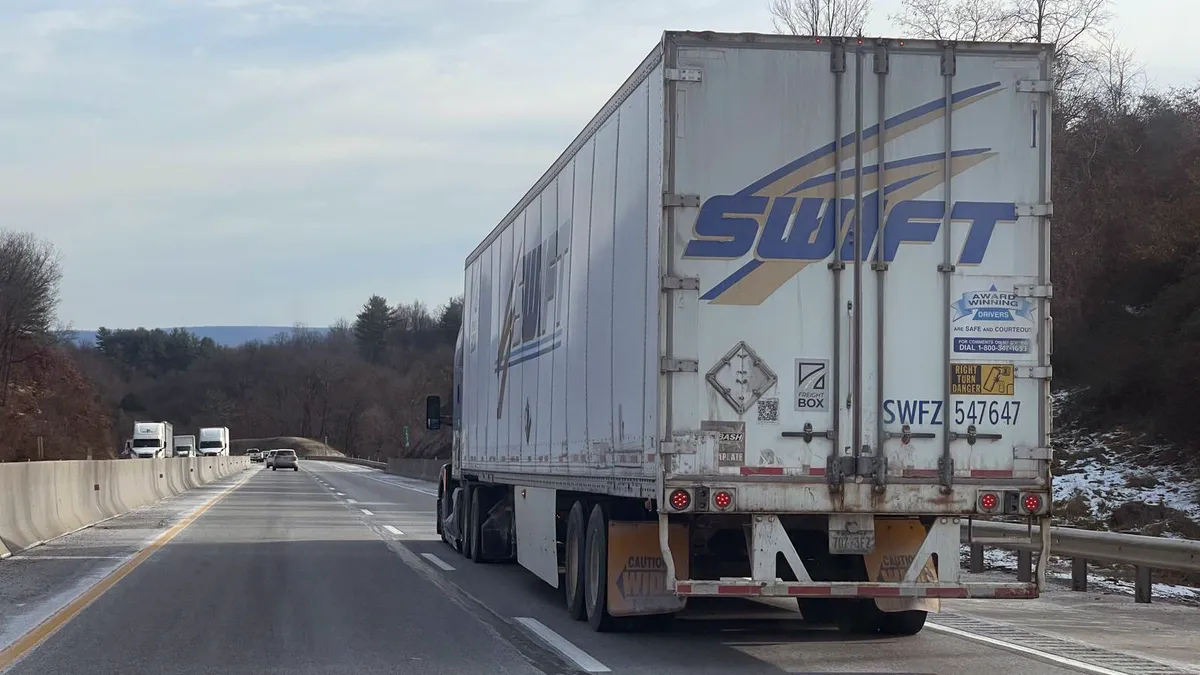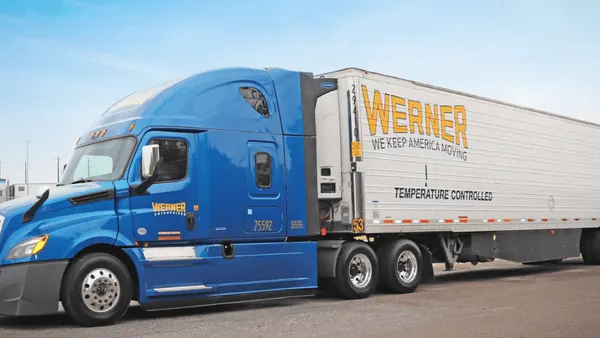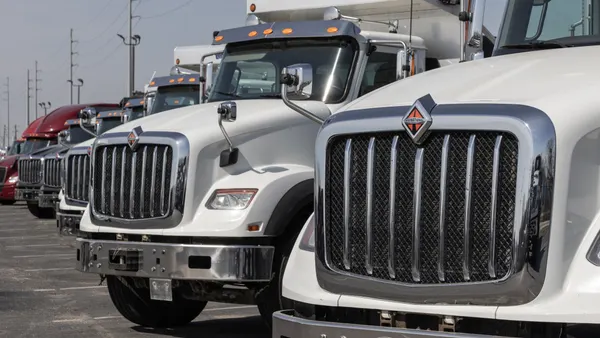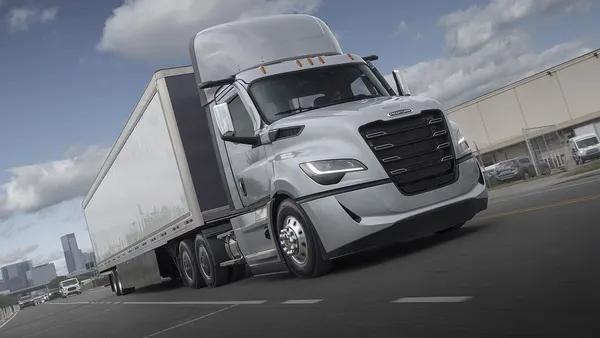Dive Brief:
- Wabash’s parts and services business is emerging as a growth engine as the company continues to face headwinds from a persistently weak freight market, according to its Q2 earnings report.
- The segment grew by 15% sequentially and by nearly 9% year over year. Net sales for the quarter totaled $59.7 million, and operating income was $9.1 million.
- “While the freight market has continued to put pressure on equipment orders and transportation solutions, parts and services continues to deliver secular growth, stabilizing earnings through the cycle,” said Mike Pettit, chief growth officer, during Wabash’s earnings call held July 25. “ As this segment expands, its higher margins will play an ever larger role in Wabash's bottom line and cash flow generation.”
Dive Insight:
With a $1 billion backlog sitting as carriers continue to “wait and see,” Wabash is pushing forward with its strategy to grow its parts and services and Trailers-as-a-Service segments.
Here’s what executives highlighted during the earnings call:
- Wabash is opening two new upfit centers in Northwest Indiana and Atlanta — two strategic markets — to increase its capacity. Last year, the manufacturer completed 1,100 upfit units, and it expects to exceed 2,000 units in 2025.
- The company invested $21 million into the Trailers-as-a-Service fleet during the first half of the year, expanding it to 1,000 units. Notably, excluding its capital investments in TAS, Wabash would be near free cash flow break even in 2025.
- Wabash has added 29 locations to its Preferred Partner Network in 2025, in an effort to grow parts distribution and accelerate repairs. It now has 110 locations with more coming online every month.
Despite that progress, Wabash opted to lower its 2025 guidance to $1.6 billion in revenue — down from a forecasted $1.8 billion in Q1 — and a steeper loss per share ranging between $1.30 and $1.
After early discussions with customers, Wabash President and CEO Brent Yeagy said he is “cautiously optimistic” that 2026 will mark a return to growth.
“Of course, our outlook assumes relative stability in the broader environment,” he said during the earnings call. “If we avoid further deterioration in business and consumer sentiment, we believe 2026 has the potential to align with current growth expectations.”












